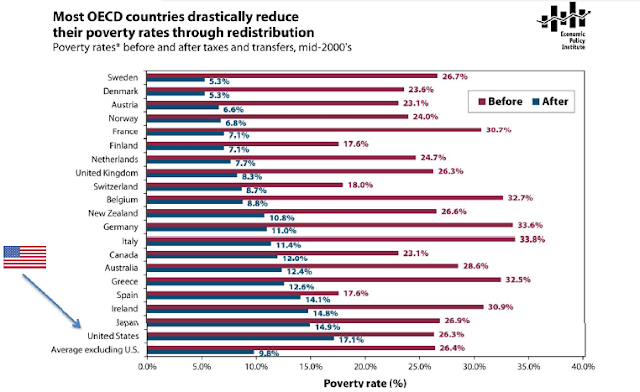Paul Romer on fizzy drinks and Covid-19 testing
Lovely thought-experiment by a Nobel laureate: “Imagine a world”, he writes, “in which the only way to get a soda is to get your doctor to write a prescription”.
It costs $20 per can. Your insurance company pays. The economy produces about 100,000 sodas each day. If you lived in this world, do you think you could get people to scale up the production of soda to a level of millions of cans per day? It would be a challenge, but not because it is hard to produce and distribute soda. This is the point of the thought-experiment.
Because they have to keep total costs from running out of control, insurance companies, health care providers, and government regulators have cobbled together a system that limits access to soda. One part of this system is an expensive regulatory process that has to approve: the ingredients in each particular brand of soda; the paper insert that comes with the soda informing patients about its risks and benefits; and the delivery system used by the soda supplier, be it a glass bottle, an aluminum can, a paper cup, etc.
Then, suddenly, everyone decides that they want more soda. Why, they ask, can’t the nation produce enough soda for everyone to have some each day? Here’s what happens:
The only people who can get sodas are those already under the care of the health care system. They are not thirsty, but the insurance company covers the cost, so whatever.
People who are thirsty start going to the hospital just to get soda. Doctors comply with their requests for a prescription. Soda producers try to increase output, but soon run into “bottlenecks.” One vendor with an approved soda delivery system that packages a straw with a can finds that its supplier of straws can not keep up with the increased demand. This soda company explains to its unhappy customers that it has FDA approval only for a product that includes a straw from its traditional supplier. The soda company says that it is applying to the FDA for an Emergency Use Authorization (EUA) that gives it permission to bundle a can with a straw from a different vendor. As it waits, it keeps repeating its excuse: “There is a straw bottleneck!”
Meanwhile, researchers on university campuses discover that you do not need a straw. But these researchers have no reason to go through the laborious process of filing for an Emergency Use Authorization that allows drinking from the can. The “straw bottleneck” persists.
In their experiments with drinking from the can, these same university researchers realize soda is just flavored sugar water and that they could produce millions of sodas per day at a price well under $1 per can. The researchers publicize their findings. Policy wonks urge them to get going: “Produce the sodas that a thirsty nation needs.” But these do not say anything about who will pay for all these additional sodas. The researchers are good sports, but they are not idiots. They produce some token batches of soda and go back to writing papers.
The wonks are surprised to discover that their meetings and documents do not yield the soda supply surge they anticipate.
Everyone gets discouraged. The wonks conclude that even an economic system as big, as powerful, and as innovative as the one we have established in the United States cannot rise to the challenge of producing millions of sodas per day. They settle for a stretch goal of offering one soda per month to each family.
For sodas read Covid-19 tests and you get the point.
This is a nice example of making complex processes comprehensible by translating them into everyday scenarios. I used a similar approach in my Slouching towards Dystopia essay to try and get readers to appreciate the absurdity of surveillance methods that would be regarded as abominable in real life and yet are passively accepted in the online world.
COVID-19 and the future of ‘techlash’
Before the pandemic, the world was slowly but surely converging on the conclusion that the tech giants needed to be regulated. One of the most depressing consequences of the pandemic is that any enthusiasm for meaningful regulation will now evaporate, if only because states have discovered the extent to which life can’t go on without some of the services that these companies provide.
Chris Meserole, A Fellow in Foreign Policy at the Brookings Institution, has a sombre essay on this theme. “The tech industry”, he writes,
is likely to end the pandemic even more entrenched and powerful than when the crisis started. Prior concerns about the industry’s market power, privacy practices, and content moderation policies—all of which posed a major challenge just months ago—no longer enjoy the same political salience.
Of course, that is not to say the problems that drove the backlash have disappeared altogether. Indeed, in a country whose unemployment rolls have grown by over 25 million in four weeks, the concentration of so much wealth and power in so few companies remains a profound policy challenge. Likewise, with even more of our work and lives now taking place online, the security and integrity of our data is more vital than ever.
Yet the pandemic has reset the relative importance of those issues. Managing the COVID-19 crisis and its aftermath are now the biggest policy challenges we face—and so long as that remains the case, the techlash will remain on hold.
He’s right. And that’s worrying.
And while we’re on that topic, the Verge has an interesting interview with Stacey Mitchell, co-director of the Institute for Local Self-reliance, in which there’s this interesting passage:
I think in the midst of the pandemic, the kind of power that these companies have is more exposed than ever. I mean, obviously, our whole lives, how we interact with one another, how we engage in commerce, has now sort of all collapsed onto the web. And you have a handful of gatekeepers in that context, including Amazon. So I do think it’s really underscored some of the arguments that I’ve been making, that others have been making, about how Amazon serves as a kind of essential infrastructure and what the dangers are of allowing that infrastructure to be entirely privately controlled without regulation.
I mean, if we don’t have any oversight over Amazon, we’re effectively allowing it to regulate our economy as a private entity — to decide which products succeed and fail, which companies succeed and fail, which communities succeed and fail. Is that really the kind of future that we want to have? I think the other thing that the pandemic is really exposing quite profoundly is how vulnerable our society is because of inequality. I mean, we see this in the numbers of people who have very little cushion or slack in their lives to fall back on during the economic stresses.
At last, some independent, informed scientific opinion that’s all in the open and not tainted by political considerations
Sir David King, who was Chief Scientific Advisor to the Blair government, has become so pissed off by the secretiveness of SAGE, the body of scientific advisers whose advice the government has supposedly been following, that he decided to launch a truly independent equivalent project, all of whose deliberations would be in the open –i.e. broadcast live on YouTube. It’s called Independent SAGE and you can find it here — the livestream is recorded and available to those who weren’t able to catch it live. I watched the first session live today and found it interesting, informative and valuable. There were occasional tech glitches of the kind that will be familiar to anyone condemned to use Zoom (or indeed any of the current video-conferencing tools), but overall it was pretty good. I learned quite a lot from it. Which is more than can be said for the daily government ‘briefings’.
Quarantine diary — Day 44
This blog is also available as a once-a-day email. If that might suit you better, why not subscribe? One email a day, delivered to your inbox at 7am, UK time. And there’s a one-click unsubscribe if you decide that your inbox is already too crowded!


